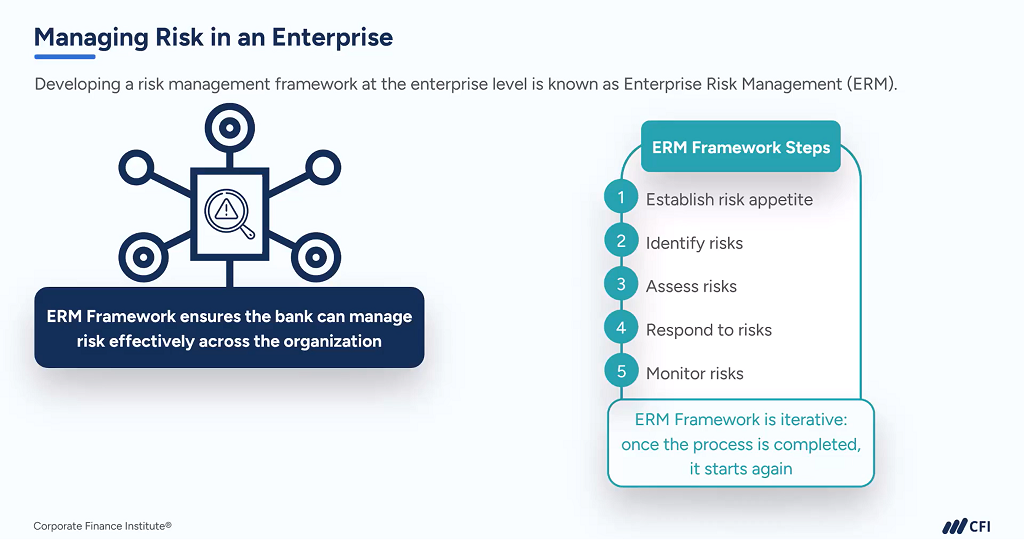Exploring the Sustained Benefits and Importance of Risk Management for Entrepreneurs
Exploring the Sustained Benefits and Importance of Risk Management for Entrepreneurs
Blog Article
Checking out the Significance of Risk Management for Effective Decision-Making Approaches
In the elaborate globe of business, Risk Management emerges as a crucial factor in the decision-making procedure. The ability to identify prospective dangers and possibilities, and plan accordingly, can spell the difference between success and failing.
Recognizing the Principle of Risk Management
Risk Management, a critical component in decision-making, is commonly misconstrued or oversimplified. Usually, it refers to the identification, assessment, and prioritization of dangers to lessen, keep an eye on, and manage the chance or influence of unfortunate occasions. However, it's not merely about avoiding unfavorable results, however likewise about recognizing potential opportunities. Risk Management includes structured and disciplined techniques, using data and informative analyses. It calls for a detailed understanding of the organization's context, objectives, and the possible threats that might obstruct them. From monetary uncertainties, lawful responsibilities, critical Management mistakes, to accidents and all-natural catastrophes, it deals with various threats. Significantly, effective Risk Management is not stationary; it's a continual, forward-looking procedure that progresses with changing conditions.
The Duty of Risk Management in Decision-Making Processes
In the world of tactical planning and business procedures, Risk Management plays an integral duty in decision-making procedures. Risk Management hence ends up being a crucial tool in decision-making, helping leaders to make enlightened options based on an extensive understanding of the risks entailed. Risk Management serves as an important element in the decision-making procedures of any kind of organization.

Exactly How Risk Management Boosts Strategic Planning
In the context of tactical planning, Risk Management plays a pivotal duty. Launching with the identification of potential threats, it further includes the execution of Risk reduction procedures. The function of Risk Management is vibrant however not static, as it requires constant surveillance and adjusting of methods.
Identifying Possible Dangers

Executing Risk Mitigation
Risk mitigation methods can range from Risk avoidance, Risk transfer, to run the risk of decrease. Each method ought to be customized to the certain Risk, considering its prospective impact and the company's Risk resistance. Effective Risk mitigation calls for a deep understanding of the Risk landscape and the possible effect of each Risk.
Monitoring and Readjusting Techniques
Though Risk reduction is a crucial step in strategic planning, continual surveillance and visit our website change of these strategies is equally crucial. It likewise offers a possibility to examine the success of the Risk Management steps, permitting adjustments to be made where needed, further improving tactical planning. Surveillance and readjusting Risk Management approaches is a critical element for improving a company's durability and tactical planning.
Case Researches: Effective Risk Management and Decision-Making
On the planet of service and financing, successful Risk Management and decision-making usually offer as the columns of flourishing enterprises. One such entity is a multinational oil firm that minimized monetary loss by hedging against varying oil prices. In an additional circumstances, a tech startup grew by recognizing and approving high-risk, high-reward strategies in an unpredictable market. A worldwide bank, confronted with governing uncertainties, successfully browsed the circumstance through aggressive Risk assessment and vibrant decision-making. These cases highlight the worth of astute Risk Management in decision-making processes. It is not the lack of Risk, yet the Management of it, that often differentiates effective companies from not successful ones. These cases emphasize the important role of Risk Management in calculated decision-making. Related Site importance of risk management.
Tools and Methods for Effective Risk Management
Navigating the complex puzzle of Risk Management calls for the best collection of strategies and tools. These tools, such as Risk signs up and heat maps, aid in recognizing and assessing prospective threats. Techniques include both measurable methods, like sensitivity analysis, and qualitative approaches, such as SWOT analysis. These help in prioritizing threats based upon their potential effect and likelihood. Risk response techniques, a vital component of Risk Management, include accepting, avoiding, transferring, or mitigating threats. Monitoring link and regulating dangers, via regular audits and reviews, make certain that the methods continue to be effective. With these devices and methods, decision-makers can browse the facility landscape of Risk Management, thus helping with educated and reliable decision-making.
Future Patterns in Risk Management and Decision-Making Approaches
As we discover the huge landscape of Risk Management, it comes to be noticeable that the devices and methods made use of today will certainly remain to develop. Future trends aim in the direction of a boosted reliance on technology, with expert system and maker knowing playing significant duties. These innovations will make it possible for organizations to predict possible dangers with greater precision and make more informed choices. Additionally, there will certainly be a growing emphasis on durability, not just in taking care of dangers but additionally in recovering from damaging circumstances. Lastly, the idea of Risk society, where every member of a company is aware and entailed in Risk Management, will certainly get more importance. These trends advertise a more aggressive and inclusive method in the direction of Risk Management and decision-making.
Verdict

Risk Management thus comes to be an essential device in decision-making, helping leaders to make informed selections based on a detailed understanding of the dangers involved. Risk mitigation strategies can vary from Risk avoidance, Risk transfer, to run the risk of reduction (importance of risk management). Reliable Risk mitigation calls for a deep understanding of the Risk landscape and the potential influence of each Risk. Risk action methods, a key part of Risk Management, include approving, preventing, transferring, or mitigating threats. The concept of Risk culture, where every participant of a company is aware and entailed in Risk Management, will get much more prestige
Report this page